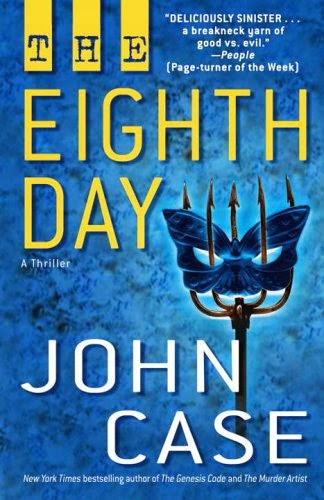2014;
326 pages. New Author? : No. Genre : Humor; Spoofery. Overall Rating : 8*/10.
Start by blending Edgar Allan Poe’s The Cask of Amontillado with two of Shakespeare’s
plays, Othello and The
Merchant of Venice. Keep the
story set (primarily) in Venice, but
move the time back 300 years to the 1300’s.
Add
one court jester, and his entourage of a monkey, a village idiot, and a
dummy. The latter two are not
synonymous. Top off with a sea serpent; after
all, there’s one in the title. Let
simmer for a year or so in Christopher Moore’s fertile and demented brain. And voila! You have The
Serpent of Venice.
Oh
yeah. Garnish with a ghost. There’s always a bloody ghost.
What’s To Like...
There’s a Cast of Characters at the front of
the book; this came in handy since of the three literary classics being blended
here, I’ve only read The Merchant of
Venice. The “mixing” is not
complete – The Cask of Amontillado
dominates the opening chapters; then Othello,
then TMoV. Christopher Moore stays pretty true to the
basic premise of each literary classic, but resolves each one in his own, and quite entertaining, way.
I
liked the characters, especially those that weren’t “lifted” from the three classics. Pocket, our main protagonist, is a hoot, as
are Jeff and Drool. You’ll love the
“Chorus” and their interaction with the characters. There are occasional footnotes, which are as
fun as the ones in Discworld. And
Immurement shows up again, courtesy of the Poe tale. After a lifetime of never encountering it in
my readings, it’s now crossed my path twice in a month. The other October book with Immurement in it is
reviewed here.
Christopher
Moore’s wit and writing mastery once again take center stage, and he is still
in top-notch form here. However, there
is abundant use of cusswords, and quite a few sexual references. I don’t remember his previous books being this
full of R-rated stuff, but I’m way behind on reading his works, and perhaps his
writing has evolved in this direction over the last 5 years or so.
For
all the humor, the book also touches on some serious issues – most notably
racism and anti-Semitism. But as Moore
points out in a worth-your-while Afterword, this is primarily because those
topics played prominent roles in the two Shakespearean plays.
Kewlest New Word. . .
Berk (n.)
: a fool. A Britishism derived from the cockney
rhyming scheme “Berkshire hunt”. I’ll let
you figure out what it means in Cockney.
Others
: Chundered (v.); Walleys (n.). I never
did figure out what “walleys” were.
Excerpts...
“Morning, love,”
said my Cordelia.
She wore the
polished black-and-gold breastplate of her armor with frilly knickers, which
tipped me off that all was not in order.
“Are you a dream,
or a ghost?” said I, reaching out to her, then catching myself before tumbling
off the bed.
“Which would
better suit you?”
“Dream, I
think. Less annoying rhyming.”
“But then,
there’s always a bloody ghost.” (pg. 140)
I nodded, then approached the sentry. “Beggin’ pardon, yeoman, would you happen to
know if there’s an enormous simpleton with a monkey being held in here?”
“Might be, what’s
it to you?”
“Well, the nitwit
is this poor boy’s father, and we’re hoping to bring him home.”
“What’s the
monkey, his little brover?”
“Half. We’re a poor family, and – “ (pg. 197)
“Cry havoc, and let slip the
trousers of most outrageous bonkilation1”
(pg. 23)
To
be honest, the first part of The Serpent of Venice
dragged a bit for me. In all fairness, Moore
had a slew of characters to introduce and a setting to establish. But it was a challenge to find the plotline in all the tomfoolery.
This was undoubtedly due in part to my not having ever read The Cask of Amontillado and Othello. Moore adheres to their
storylines rather faithfully, but that was lost on me, at least until The Merchant of Venice took over. However, once all the world-building was
done, the Moore's innovative tale took center stage, and I warmed rapidly to this book.
The
persistent use of cusswords and sexual innuendos got old. I wasn’t offended, just bored by the
repetition. Yet who knows, if William
Shakespeare was alive today, maybe he’d be writing in this style. Edgar Allan Poe most certainly would. His style was cutting edge in the 1800’s;
there’s no reason he’d be a mainstream author today.
8 Stars. Add
½ star for each of the three classics employed
here that you have read and/or been forced to memorize passages from. Parts like “the quality of mercy is not strained…” and “if you prick us, do we
not bleed…”. Reading this brought back
some old memories of high school English class for me. Not necessarily fond ones; just old.








